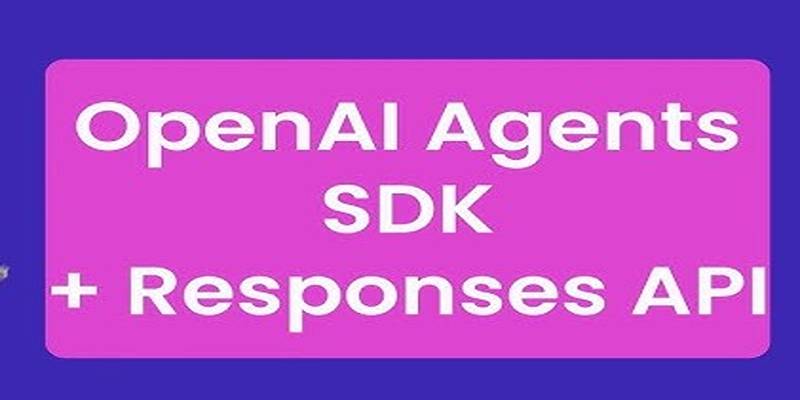The world of artificial intelligence has seen rapid progress, and small language models (SLMs) are now packing more power than ever. Compact, fast, and resource-efficient, these models are ideal for real-time applications, on-device inference, and low-latency tools.
Among the latest SLMs gaining attention are Phi-4-mini by Microsoft and o1-mini by OpenAI. Both are designed for high-quality reasoning and coding, making them ideal for developers, researchers, and tech teams working on STEM applications.
This post will do a detailed comparison of Phi-4-mini vs o1-mini. This guide will assess them based on architecture, benchmarks, reasoning skills, and real-world coding challenges. By the end, you’ll know which model suits your specific needs.
What is Phi-4-mini?
Phi-4-mini is a cutting-edge small language model developed by Microsoft. Despite having only 3.8 billion parameters, it’s built for serious reasoning, math problem-solving, and programmatic tasks. One of its standout features is its efficiency in edge environments—devices or applications where computing power is limited.
Architecture and Design
- Model Type: Dense, decoder-only transformer
- Parameters: 3.8 billion
- Context Length: 128K tokens
- Vocabulary Size: 200,064
- Attention Mechanism: Grouped Query Attention (GQA)
- Training Data: 5 trillion tokens, including educational, synthetic, and programming data
The GQA mechanism allows Phi-4-mini to deliver faster inference while maintaining the quality of multi-head attention, effectively balancing speed and performance.
Key Features
- Shared Embeddings: Saves memory by reusing input and output embeddings
- API Function Calling: Can integrate with external tools
- Instruction Following: Tuned for following structured prompts in education, math, and code
- Optimized for Edge: Great for low-resource environments
What is o1-mini?

o1-mini, created by OpenAI, is a lean, fast, and cost-efficient small model designed to be practical and reliable. While OpenAI hasn’t disclosed its parameter count, its performance suggests that it is extremely well-optimized.
Architecture and Design
- Transformer Type: Standard transformer (details not fully revealed)
- Context Length: 128K tokens
- Optimization Focus: Speed, simplicity, and affordability
- Training Data: Not fully disclosed, but likely includes common programming and logic datasets
Though the o1-mini lacks architectural extras like GQA, it makes up for it in raw performance across various tasks.
Key Features
- Fast Inference: Responds quickly, even on limited hardware
- High Accuracy in Logic Tasks: Excels at pattern recognition and structured reasoning
- Coding Support: Generates clean, testable code
- Broad Application Fit: Suitable for general AI use cases and education
Phi-4-mini vs o1-mini: Side-by-Side Model Comparison
Feature | Phi-4-mini | o1-mini |
Architecture | Decoder-only with GQA | Standard transformer |
Parameters | 3.8B | Not disclosed |
Context Window | 128K tokens | 128K tokens |
Attention | Grouped Query Attention | Not detailed |
Embeddings | Shared input-output | Not specified |
Performance Focus | High precision in math and logic | Fast, practical solutions |
Best Use Case | Complex logic, edge deployment | General logic and coding tasks |
Summary: Phi-4-mini offers architectural sophistication and mathematical muscle, while o1-mini leads to user-friendliness, speed, and code clarity.
Reasoning Performance in Benchmarks
To see how well these models perform in reasoning tasks, this guide compared them against established benchmarks like AIME 2024, MATH-500, and GPQA Diamond. These datasets are designed to test abstract thinking, logical reasoning, and problem-solving capabilities.
Benchmark Scores
Model | AIME | MATH-500 | GPQA Diamond |
o1-mini | 63.6 | 90.0 | 60.0 |
Phi-4-mini (reasoning-tuned) | 50.0 | 90.4 | 49.0 |
DeepSeek-R1 Qwen 7B | 53.3 | 91.4 | 49.5 |
DeepSeek-R1 Llama 8B | 43.3 | 86.9 | 47.3 |
Bespoke-Stratos 7B | 20.0 | 82.0 | 37.8 |
LLaMA 3-2 3B | 6.7 | 44.4 | 25.3 |
Despite its smaller size, Phi-4-mini outperforms several 7B and 8B models, especially in MATH-500. On the other hand, o1-mini leads in AIME and GPQA, proving its strength in general logical reasoning.
Where Does Each Model Work Best?

Choosing between Phi-4-mini and o1-mini depends heavily on your intended deployment environment, performance expectations, and resource constraints. While both models excel as compact reasoning and coding engines, their architectural differences make them better suited for specific use cases.
Where Phi-4-mini Excels
- Edge Devices and Mobile Applications: Thanks to its Grouped Query Attention (GQA) and shared input-output embeddings, Phi-4-mini is optimized for lightweight inference. These design efficiencies reduce memory and compute demands, allowing the model to operate smoothly on mobile devices, Raspberry Pi-class hardware, or embedded AI systems. It makes it an ideal candidate for offline apps, IoT devices, or privacy-focused deployments where sending data to the cloud isn't an option.
- Math Tutoring and STEM Platforms: Phi-4-mini consistently outperforms even some 7B+ models on math-heavy benchmarks like MATH-500 and AIME, making it a strong choice for educational tools. Its ability to deliver step-by-step solutions, symbolic reasoning, and clean explanations benefit students and teachers alike. For example, apps that offer algebra tutoring, geometry walkthroughs, or exam preparation could leverage Phi-4-mini’s math specialization.
- Function-Calling and Multi-Agent Systems: Built with support for function calls, Phi-4-mini integrates well into API-driven workflows and multi-agent frameworks where external tools or data sources must be invoked dynamically. It’s particularly effective in agentic AI systems where reasoning and structured communication with APIs are required.
Where o1-mini Shines
- Developer Productivity Tools: o1-mini generates high-quality, readable code with comments, docstrings, and clear variable naming. It makes it excellent for integration with IDE plugins, code review bots, or AI pair programming assistants. Developers working in Python, JavaScript, or general scripting will benefit from o1-mini’s clarity and low-latency responses.
- Real-Time Chatbots and Interactive Systems: Its speed and high accuracy in logic games, riddles, and general reasoning tasks make o1-mini ideal for interactive AI applications. Whether it's a conversational game bot, an educational tutor, or a customer service assistant, o1-mini delivers answers quickly while maintaining a high degree of correctness.
- Cost-Effective Cloud Deployments: For startups, researchers, or teams operating under budget constraints, o1-mini offers the best performance-per-dollar ratio. Its lightweight nature means faster inference, fewer API calls, and lower operational costs, especially when scaled across multiple users or microservices.
Conclusion
Both Phi-4-mini and o1-mini are highly capable small language models, each with unique strengths. o1-mini stands out with its speed, accuracy, and well-structured coding outputs, making it ideal for general-purpose reasoning and software development tasks. On the other hand, Phi-4-mini shines in mathematical reasoning and edge deployments thanks to its efficient architecture and function-calling capabilities.
While Phi-4-mini sometimes overanalyzes, it provides deeper insights into complex scenarios. o1-mini is better suited for users seeking fast, clear, and reliable results. Ultimately, the best choice depends on whether your priority is speed and clarity or depth and precision.











